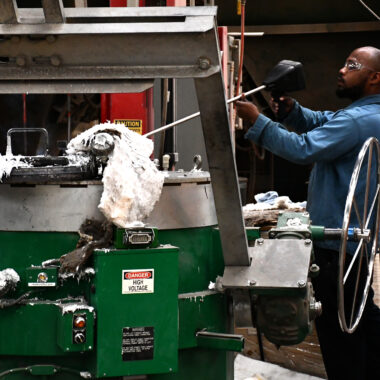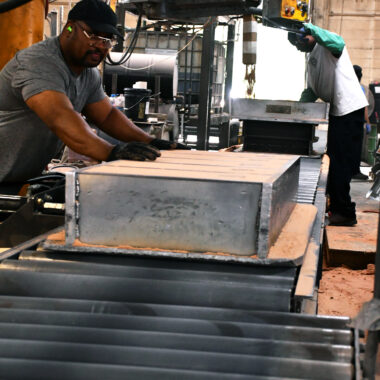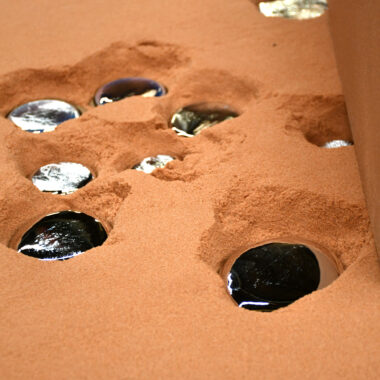Boost Your Assembly Line: Aluminum Casting Techniques That Supply Results
Boost Your Assembly Line: Aluminum Casting Techniques That Supply Results
Blog Article
Study the Globe of Light Weight Aluminum Spreading: Understanding the Different Approaches
Light weight aluminum casting is a basic process in the production industry, with different methods used to create exact and intricate elements. From the traditional sand spreading approach to the advanced die casting procedure, each approach uses one-of-a-kind advantages depending on the demands of the task.
Sand Casting Technique
Sand casting, a widely-used method in aluminum spreading procedures, involves creating mold and mildews constructed from compacted sand for pouring liquified metal. This approach is economical and extremely functional, making it a prominent selection for numerous industries. The procedure starts with the production of a pattern, usually constructed from timber or metal, which is after that pressed into the sand to leave an impression. The sand mix, commonly silica sand combined with a binder like clay, is snugly loaded around the pattern to develop a mold tooth cavity. Once the mold is all set, it is firmly positioned in a flask and molten light weight aluminum is put into the dental caries.
After the metal has actually cooled down and strengthened, the sand mold is damaged away to disclose the aluminum casting. Sand casting enables the production of complicated shapes and large components that might be challenging or costly to produce using various other methods. It is also a lasting method as the sand can be recycled and used multiple times, reducing waste in the casting process.
Long-term Mold And Mildew Strategy

One considerable benefit of the Long-term Mold And Mildew Method is the enhanced dimensional precision it uses. The metal mold and mildew enables tighter resistances and better information in the last light weight aluminum castings contrasted to sand spreading approaches. This accuracy makes it a favored selection for applications where tight dimensional control is important, such as in the vehicle and aerospace industries.

Die Casting Refine

Investment Casting Method
Utilizing an accuracy spreading approach, Financial investment Casting Method involves producing complex aluminum parts by putting liquified steel into a ceramic mold and mildew. This procedure, likewise recognized as lost-wax casting, begins with the development of a wax pattern of the desired part (aluminum casting).
Financial investment spreading is commonly utilized for making components in markets where detailed designs and limited resistances are called for, such as aerospace, automobile, and clinical tools. The flexibility and precision of the Financial investment Casting Strategy make it a useful technique in the world of aluminum spreading.
Lost Foam Spreading Approach
Having actually discovered the detailed precision of Investment Casting Approach, the focus currently changes to the cutting-edge approach of Lost Foam Spreading in aluminum component manufacturing. Lost Foam Spreading, also recognized as evaporative pattern spreading, is a contemporary method where a foam pattern of the desired part is produced and then covered with a refractory product.
One of the main benefits of Lost Foam Casting is its capability to create complex forms with complex details, typically in a solitary item without the requirement for additional machining. This approach is likewise understood for its high dimensional precision and smooth surface finish. In Addition, Lost Foam Casting is an affordable process as it decreases the need for cores and permits the manufacturing of lightweight parts. In spite of its benefits, Lost Foam Spreading calls for careful control of the spreading process to guarantee and prevent flaws quality parts.
Final Thought
In final thought, aluminum casting supplies a variety of techniques such as sand spreading, irreversible mold and mildew technique, pass away spreading, investment spreading, and shed foam spreading. Each approach has its own advantages and applications, making light weight aluminum casting a functional her explanation and widely utilized procedure in numerous industries. Comprehending the distinctions in between these methods is crucial in selecting the most appropriate spreading strategy for particular manufacturing requirements.
Sand casting, a widely-used method in aluminum casting processes, entails creating molds made of compacted sand for pouring molten metal. aluminum casting.The Long-term Mold Strategy, like sand spreading, is an additional widespread approach used in light weight aluminum spreading procedures, supplying distinctive benefits in terms of mold and mildew reusability and dimensional precision. The steel mold and mildew allows for tighter resistances and better information in the final aluminum castings compared to sand casting approaches. The 2 primary types of die casting are cold chamber pass away spreading and warm chamber pass away casting, each appropriate for different types of light weight aluminum alloys.In conclusion, light weight aluminum spreading supplies a selection of techniques such as sand spreading, permanent mold strategy, pass away spreading, investment casting, and lost foam casting
Report this page